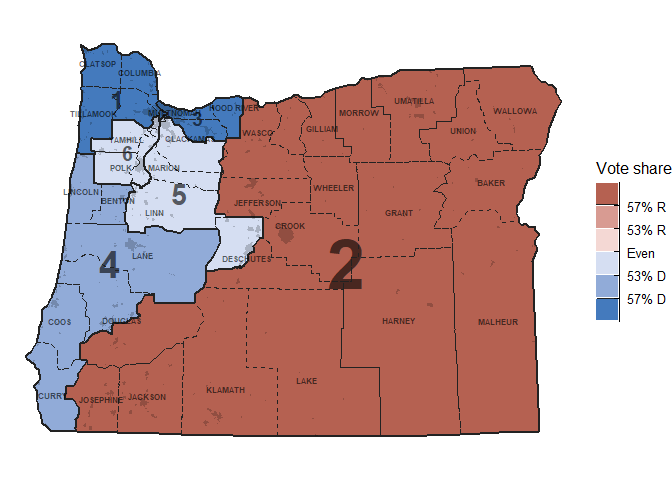

ggredist provides ggplot2 extensions for
political mapmaking, including new geometries, easy label generation and
placement, automatic map coloring, and map scales, palettes, and
themes.
Here’s an example of what you can do with the package.
library(ggredist)
library(ggplot2)
data(oregon)
ggplot(oregon, aes(group=cd_2020)) +
# 'ndv' and 'nrv' contain D and R vote counts
geom_district(aes(fill=ndv, denom=ndv+nrv), linewidth=0.9) +
geom_district_text() +
# can then highlight towns and cities
geom_places(state = 'OR') +
# we can overlay county boundaries and labels
geom_district(aes(group=county), linewidth=0.2, linetype="dashed", fill=NA) +
geom_district_text(aes(group=county, label=toupper(county)),
size=2.2, check_overlap=TRUE) +
scale_fill_party_b(limits=c(0.4, 0.6)) +
theme_map()
See more in the reference.
You can install the development version of ggredist from GitHub with:
# install.packages("remotes")
remotes::install_github("alarm-redist/ggredist")